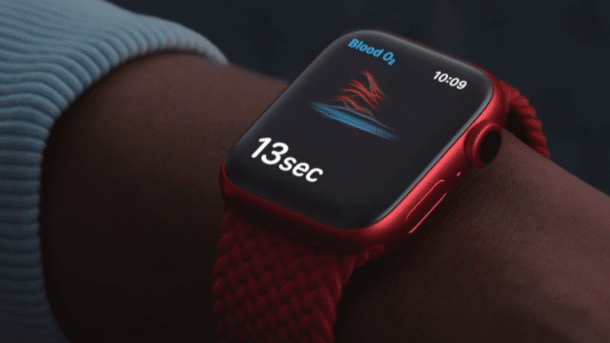Apple Watch’s Blood Oxygen Feature Remains Offline in the U.S. Amid Prolonged Legal Dispute

Apple’s Health Tech Vision Faces a Legal Setback
For over a year, Apple Watch users in the United States have been missing one of the device’s most talked-about wellness features: the blood oxygen sensor. Introduced with great anticipation in the Apple Watch Series 6, the sensor's purpose was to help users monitor oxygen saturation—an especially timely function during the COVID-19 pandemic.
But since late 2023, the feature has been disabled on all Apple Watch units sold in the U.S., due to an unresolved patent infringement lawsuit filed by Masimo, a California-based medical technology company. The lawsuit alleges that Apple infringed on several of Masimo’s patents related to non-invasive blood oxygen monitoring.
Feature Disabled—Not Removed
Although the hardware enabling the function is still present in newer models like the Apple Watch Series 10 and Ultra 2, the feature remains inaccessible. This is not due to a hardware change but a deliberate software restriction implemented by Apple to comply with ongoing legal orders and to avoid a potential import ban threatened by the U.S. International Trade Commission (ITC).
Reports from Bloomberg over the weekend confirmed that Apple has no immediate plans to re-enable the blood oxygen sensor in the U.S., leaving a major health-related feature dormant for American users. The decision also means that new customers buying Apple Watches today receive hardware that is intentionally hobbled—at least until the legal fog clears.
No End in Sight for the Patent Dispute
The conflict, which has dragged on for years, reached a critical point in late 2023 when the ITC ruled against Apple, finding it had infringed on Masimo’s intellectual property. The tech giant swiftly responded by disabling the feature in software, rather than removing the hardware, thereby skirting a total import ban while awaiting the results of ongoing appeals.
In October 2024, Apple won a partial counterclaim in the case, but the victory had minimal financial impact and didn’t affect the broader import ban ruling. The dispute remains active in both local U.S. courts and the ITC, complicating and prolonging the outcome. Notably, both parties are American companies, which minimizes the chance of regulatory bias in favor of Apple.
A Feature More About Wellness Than Medicine
Apple has always been careful in positioning the blood oxygen sensor as a wellness and fitness tool rather than a certified medical function. In fact, marketing and documentation clearly state that the feature is not intended for medical use, which arguably weakens its centrality to the Apple Watch ecosystem.
Even when the function was available, it wasn’t without criticism. Early reviews in 2020 pointed to inconsistencies in measurement accuracy, and the app often failed to produce reliable data in real-world conditions—especially during nighttime wear.
Nonetheless, during the pandemic, the ability to monitor blood oxygen levels gained significant attention. Many users relied on the feature as an informal early-warning system for respiratory issues related to COVID-19. Now, some users are left wondering why such potentially life-improving technology is trapped in legal red tape.
Apple’s Workarounds and Alternative Features
Despite the absence of blood oxygen tracking, Apple hasn’t slowed down on health features. Recent watchOS updates introduced sleep apnea detection—a function some assumed would require blood oxygen data. Surprisingly, Apple managed to implement it using motion sensors and advanced sleep tracking algorithms instead.
This move demonstrates Apple's adaptability but also underscores how patent limitations can affect how and where features are delivered. Some observers argue that the legal battle has slowed the rollout of other health tech enhancements that depend on biometric readings.
Implications for the Broader Tech Industry
The Apple-Masimo dispute is more than just a courtroom drama—it’s a case study in the growing friction between consumer electronics companies and medical device firms. As wearable tech becomes increasingly intertwined with personal health, questions around patent ownership, FDA regulation, and ethical development are taking center stage.
Masimo, which has a long history in medical monitoring technology, claims Apple poached key staff and copied core technologies. The case could set a precedent for how much of a company’s intellectual property can be "reimagined" for consumer tech use.
Apple, for its part, has remained tight-lipped. No major statements have been issued recently, and the company appears committed to a legal strategy focused on appeals rather than settlements.
What Comes Next?
With no resolution on the horizon, American consumers may be stuck with incomplete Apple Watches for the foreseeable future. Those interested in full-featured wearables will need to either buy older international models or consider alternative brands—though most competitors also license or avoid similar technologies.
From a policy standpoint, the U.S. tech industry is closely watching how this case unfolds, especially with increasing scrutiny over tech patents and how intellectual property law intersects with health innovation.
For Apple, the case is a reminder that even trillion-dollar companies are not immune to the complexities of global intellectual property law—especially when innovation rubs up against the legacy of specialized industries like medical tech.
Sources
-
CBS News
-
Bloomberg
-
Heise Online
-
Apple Inc. official documentation
-
Masimo Corporation press releases
-
ITC rulings and filings

MNF
Content Creator at MNF
Passionate about delivering high-quality content on technology, news, and more. Follow me for the latest updates and insights.
Leave a comment
Share your thoughts and comments on this post.
Comments
There are no comments. Be the first to comment 😊💡